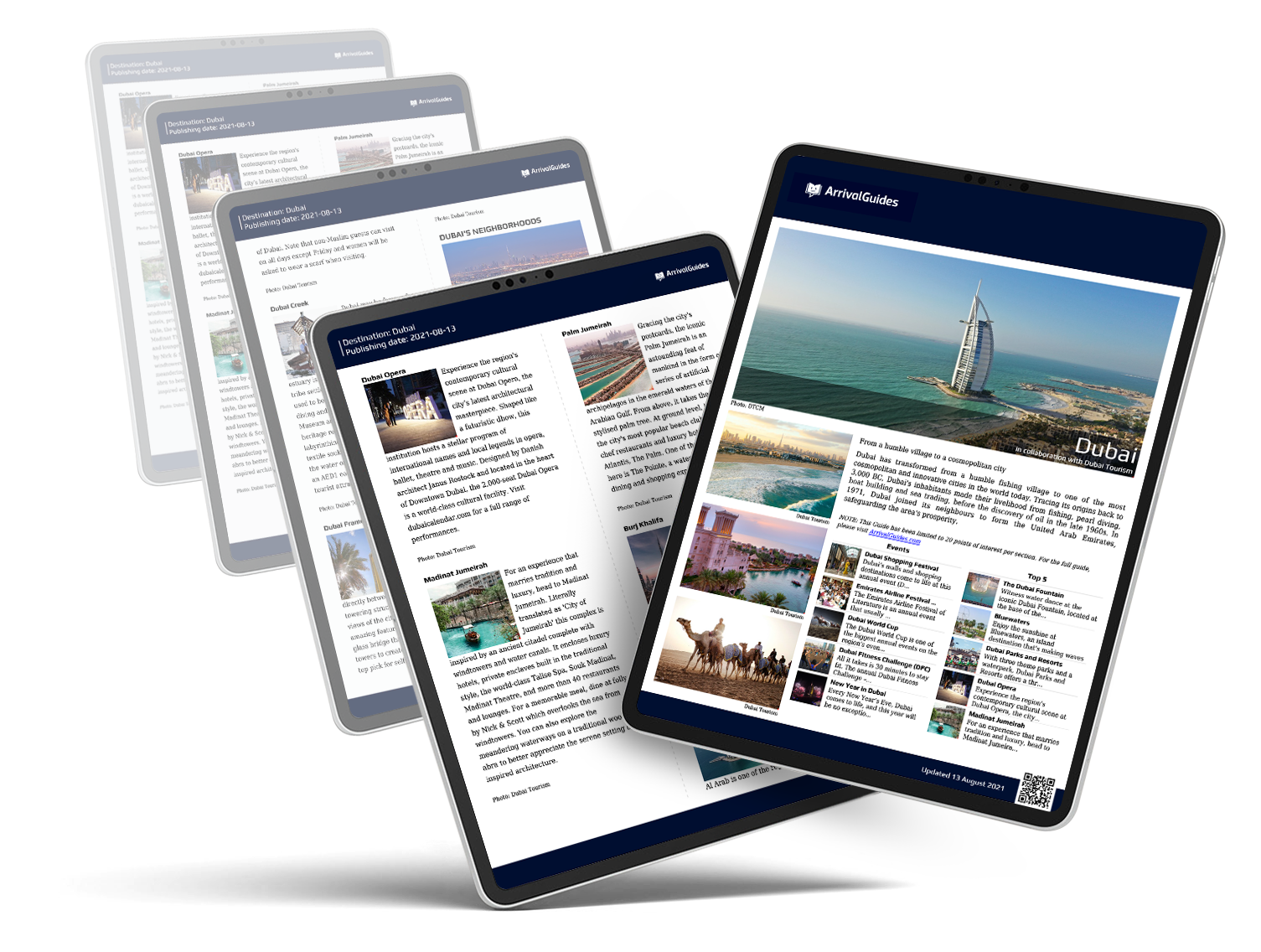
-
![Close Up of Opera Glasses in Concert Hall]() Provided by: LeDarArt/Shutterstock
Provided by: LeDarArt/Shutterstock

Our travel guides are free to read and explore online. If you want to get your own copy, the full travel guide for this destination is available to you offline* to bring along anywhere or print for your trip.
*this will be downloaded as a PDF.Price
€4,95
Stuttgart's State Theatre
The guide was updated:Stuttgart's State Theatre (Staatstheater Stuttgart) is a major cultural hub, comprising the Opera House (Opernhaus), Playhouse (Schauspielhaus), and Ballet. The Opera House, built between 1909 and 1912 by architect Max Littmann, is one of the few German opera houses to survive World War II bombings. It was restored to its original condition between 1982 and 1984 and now seats 1,404 spectators. The theatre hosts a diverse range of performances, including opera, ballet, and drama, with a schedule that spans almost every day of the year. For current show listings and ticket information, it's best to check their official website.
Useful Information
- Address: Oberer Schloßgarten 6, Stuttgart
- Website: www.staatsoper-stuttgart.de
- Phone: +49 711 202090
Digital Travel Guide Download
Our travel guides are free to read and explore online. If you want to get your own copy, the full travel guide for this destination is available to you offline* to bring along anywhere or print for your trip.
*this will be downloaded as a PDF.Price
€4,95

Palace Square (Schlossplatz) is Stuttgart’s central gathering spot, framed by the New Palace and the Königsbau. At its centre stands the Jubilee Column, topped by the goddess Concordia, commemorating King Wilhelm I’s 25th year of rule. Once a military parade ground, the square was opened to the public in the 19th century and now hosts open-air concerts, festivals, and parts of the Christmas market.
Read more

Stuttgart City Library (City Library at the Mailänder Platz)
Hard to miss and easy to like, the Stuttgart City Library is a massive white cube just a short walk from the main station. Step inside and you're in a vast, white space that feels more like a sci-fi film set than a library. Books line open balconies around a light-filled atrium, everything quiet, clean, and geometric. Head to the rooftop for a surprisingly good city view, or grab a coffee downstairs and just take it all in.
Read more

Schloss Solitude
Schloss Solitude sits on a quiet ridge just outside Stuttgart, built in the 1760s as Duke Carl Eugen’s rather extravagant idea of a hunting lodge. It’s Rococo inside and out—decorative, symmetrical, and full of detail. You can join a guided tour or just come for the surroundings: forest paths, a long avenue that leads back to the city, and a view that opens wide on a clear day.
Read more

Höhenpark Killesberg
Höhenpark Killesberg is Stuttgart’s go-to green space when you want a break from the city buzz. It’s got a bit of everything: a 40-metre spiral tower with city views, a miniature train that loops through the park, and a petting zoo with goats, donkeys, and llamas. During the summer months, the outdoor pool and wave machine are a hit, and there’s plenty of space to picnic or wander through flower gardens.
Read more

Mercedes-Benz Museum
The Mercedes-Benz Museum is worth a few hours, even if you're not big on cars. Spread over nine levels, it walks you through more than 130 years of automotive history—from the first motorised carriage to modern electric prototypes—with around 160 vehicles on display. The building itself is a bit of an architectural talking point, designed like a double helix. Exhibits are well laid out, easy to follow, and occasionally rotate.
Read more

Sepulchral Chapel on Württemberg Hill
Perched atop Württemberg Hill, the Sepulchral Chapel (Grabkapelle) was built by King Wilhelm I in the early 19th century as a tribute to his late wife, Katharina. Designed by court architect Giovanni Salucci, the neoclassical structure features a domed rotunda and houses the tombs of the royal couple and their daughter. The chapel is surrounded by vineyards and offers panoramic views over the Neckar Valley and Stuttgart.
Read more

Wilhelma
Wilhelma is Stuttgart’s unique zoological and botanical garden, set in a 19th-century Moorish-style palace complex built for King Wilhelm I. It’s the only place in Germany that combines a zoo and botanical garden, with around 11,000 animals from roughly 1,200 species, and about 8,500 plant species from all over the world. The grounds are a mix of historic architecture, greenhouses, and themed enclosures like the new Terra Australis area, home to koalas and other Australian species.
Read more

Stuttgart TV Tower
Completed in 1956, the Stuttgart TV Tower was the world’s first television tower built with reinforced concrete and remains a model for others globally. Standing at 216.61 metres, it offers stunning views from its observation decks and is home to a rotating restaurant and café.
Read more

Porsche Museum
Located next to Porsche's headquarters in Zuffenhausen, the museum showcases around 80 vehicles and 200 smaller exhibits, all displayed within a striking 5,600-square-metre space. The building itself is an architectural highlight—a futuristic structure designed by Viennese firm Delugan Meissl Associated Architects, appearing to hover above the ground on just three supports. Inside, the exhibits are arranged chronologically, offering a comprehensive look at Porsche's evolution from its early days to the present. The museum also features a glass-walled workshop where visitors can observe vehicle restorations in progress.
Read more

Landesmuseum Württemberg
Housed in Stuttgart's Old Castle, the Landesmuseum Württemberg is the state's largest cultural history museum, with its origins tracing back to the 16th-century Kunstkammer of the Württemberg dukes. Officially founded in 1862 by King Wilhelm I, the museum's collections span over a million objects, covering archaeology, art, and cultural history from the Stone Age to the present day. Highlights include prehistoric artefacts, Roman relics, medieval art, the crown jewels of Württemberg, and one of the world's oldest preserved card games. The museum also features the 'Junges Schloss', a children's museum designed to make history accessible to younger visitors.
Read more

Art Museum Stuttgart
The Kunstmuseum Stuttgart is hard to miss—by day, it’s a sleek glass cube reflecting the city; by night, its illuminated limestone core glows from within. The museum holds around 5,000 square metres of exhibition space, much of it tucked beneath the square in repurposed tunnels. It’s home to the world’s largest collection of works by Otto Dix, including his famous triptych Großstadt. The collection also includes pieces by Adolf Hölzel, Willi Baumeister, and other key figures in modern and contemporary German art.
Read more

Linden Museum
The Linden Museum in Stuttgart is one of Europe's leading ethnological museums, offering a comprehensive look at global cultures. Its collection spans approximately 160,000 objects from Africa, the Americas, Asia, and Oceania, including everyday items, artworks, and sacred objects. Permanent exhibitions cover regions such as the Islamic Orient, South and Southeast Asia, East Asia, Africa, and Oceania. Highlights include immersive displays like a Japanese teahouse, a Tibetan altar room, and a carved Māori meeting house.
Read more

SI-Centrum Stuttgart
SI-Centrum is where you go in Stuttgart if you're after a full night out in one place. It’s got two large theatres that put on big-name musicals, a cinema, a casino, and a spa with themed saunas and pools. There are also plenty of places to eat and drink. It's a bit outside the city centre, but easy enough to reach by U-Bahn (Salzäcker stop).
Read more

Stuttgart State Gallery
The Stuttgart State Gallery (Staatsgalerie Stuttgart) is one of Germany’s leading art museums, showcasing works from the 14th century to the present. Its collection includes approximately 5,500 paintings and sculptures, 250,000 works on paper, and up to 250,000 archival documents from artists' estates. The museum comprises three main buildings: the original 1843 structure, the postmodern extension designed by James Stirling in 1984, and a 2002 addition by architects Wilfrid and Katharina Steib. Stirling’s extension, known as the Neue Staatsgalerie, is celebrated for its innovative design that integrates a public walkway through the museum, blending classical and modern elements. The Staatsgalerie's extensive collection features masterpieces by artists such as Oskar Schlemmer, Henri Matisse, Salvador Dalí, and Joan Miró.
Read more

Stuttgart State Museum of Natural History
The Stuttgart State Museum of Natural History is split between two locations in Rosenstein Park: Schloss Rosenstein and the Museum am Löwentor. Schloss Rosenstein focuses on biology and ecosystems, featuring exhibits like a 13-metre-long sei whale model and displays on biodiversity, evolution, and various habitats. The Museum am Löwentor showcases paleontological and geological collections, including fossils from the region. Together, they offer a comprehensive look at the natural world, from prehistoric times to present-day ecosystems.
Read more

Mineral Spas
Stuttgart has the second-largest mineral water reserves in Europe, just after Budapest. In Bad Cannstatt, 19 springs produce around 44 million litres of mineral water daily. Locals have been using these waters for centuries, and today, three public mineral spas keep the tradition alive: DAS LEUZE, Mineralbad Berg, and SoleBad Cannstatt.
DAS LEUZE is the most modern of the three, with indoor and outdoor pools fed by natural mineral springs, a large sauna area, and a dedicated children’s section. It’s located right by the Neckar River and easily accessible via public transport.
Read more

Weissenhof Museum in the Le Corbusier House
The Weissenhof Estate is a standout example of Modernist housing, built in 1927 with Mies van der Rohe overseeing the project. Seventeen European architects, including Le Corbusier, were involved, and one of the buildings he designed is now a museum—a must-see for architecture buffs.
Read more

Stuttgart's State Theatre
Stuttgart's State Theatre (Staatstheater Stuttgart) is a major cultural hub, comprising the Opera House (Opernhaus), Playhouse (Schauspielhaus), and Ballet. The Opera House, built between 1909 and 1912 by architect Max Littmann, is one of the few German opera houses to survive World War II bombings. It was restored to its original condition between 1982 and 1984 and now seats 1,404 spectators. The theatre hosts a diverse range of performances, including opera, ballet, and drama, with a schedule that spans almost every day of the year. For current show listings and ticket information, it's best to check their official website.
Read more


